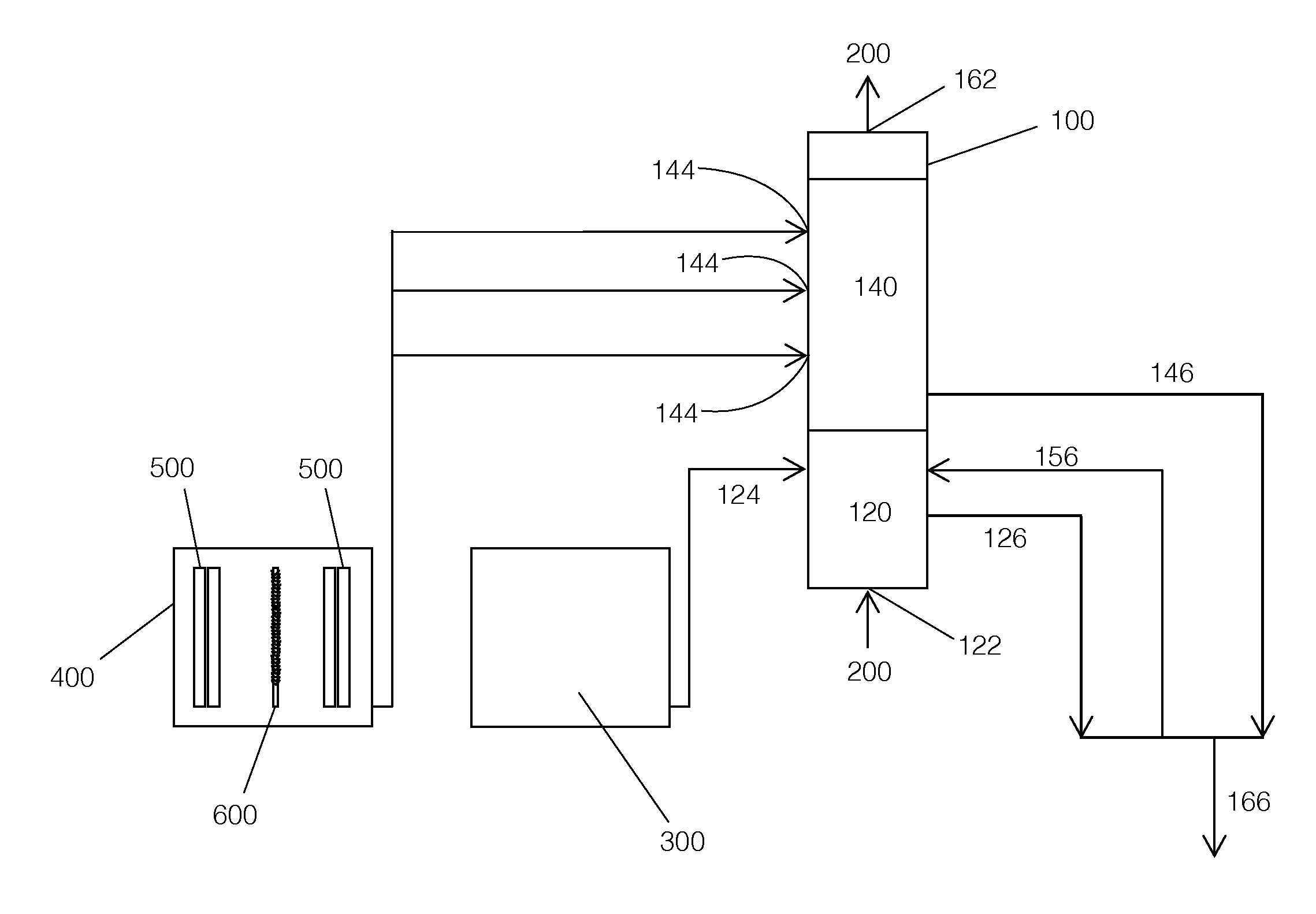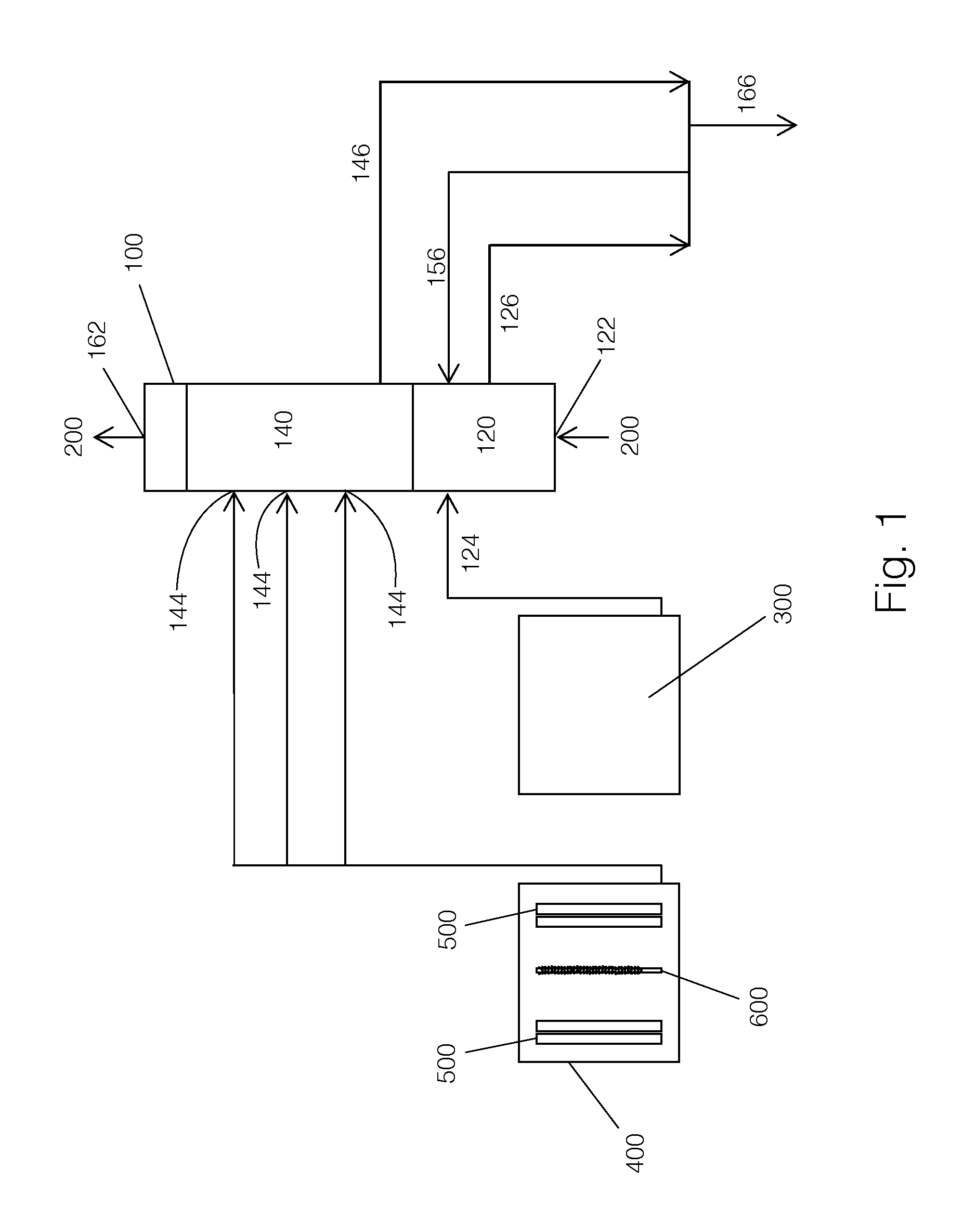Method And System For Removing Pollutants And Greenhouse Gases From A Flue Gas
a technology of flue gas and pollutants, applied in the direction of combustion process, combustion treatment, inorganic chemistry, etc., can solve the problems of affecting the combustion efficiency of combustion devices, affecting the use of these approaches, and affecting the environment and marine environment. , to achieve the effect of dramatic improvement of energy production efficiency
- Summary
- Abstract
- Description
- Claims
- Application Information
AI Technical Summary
Benefits of technology
Problems solved by technology
Method used
Image
Examples
example
[0063]In various tests, the system shown in FIG. 1 is used to treat a flue gas under the conditions below:[0064]Height of tower: 7 to 11 m[0065]Height of the first stage: about 1 m[0066]Contact time between the flue gas and water: 25 seconds to 1 minutes[0067]Pressure of sea water: 2 to 8 bar[0068]pH of the treated alkaline water: 9.5 to 10[0069]Concentrations of components present in the flue gas: SO2: 10 to 2000 ppm[0070]NOx: 0 to 1000 ppm[0071]CO2: 2 to 7% by volume[0072]Temperature of the flue gas: 100 to 300° C.[0073]Flow rate of the flue gas: approximately 500 to 2500 m3 / h[0074]Flow rate of the natural seawater: approximately 10 to 25 m3 / h[0075]Flow rate of the treated alkaline water: approximately 5 to 25 m3 / h
[0076]The results of the tests showed that the removal of the gas SO2, NOx and CO2 are 80%-100%, 60%-80% and 20%-60%, respectively.
[0077]Thus, the present invention provides a method and a system which effectively remove the pollutants and greenhouse gases SO2, NOx and C...
PUM
| Property | Measurement | Unit |
|---|---|---|
| temperature | aaaaa | aaaaa |
| pH | aaaaa | aaaaa |
| temperature | aaaaa | aaaaa |
Abstract
Description
Claims
Application Information
 Login to View More
Login to View More - R&D
- Intellectual Property
- Life Sciences
- Materials
- Tech Scout
- Unparalleled Data Quality
- Higher Quality Content
- 60% Fewer Hallucinations
Browse by: Latest US Patents, China's latest patents, Technical Efficacy Thesaurus, Application Domain, Technology Topic, Popular Technical Reports.
© 2025 PatSnap. All rights reserved.Legal|Privacy policy|Modern Slavery Act Transparency Statement|Sitemap|About US| Contact US: help@patsnap.com


